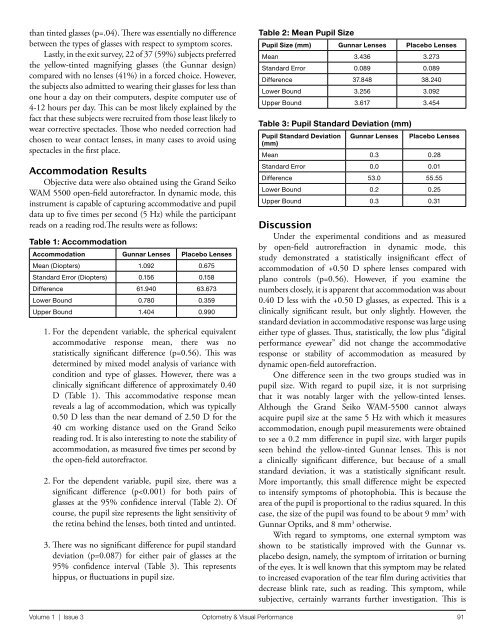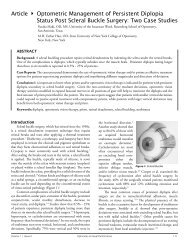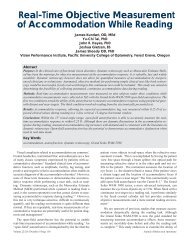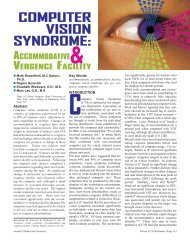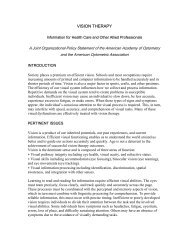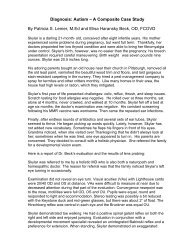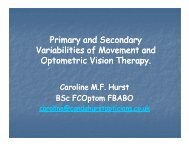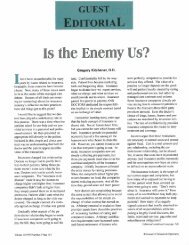Download - Optometric Extension Program Foundation
Download - Optometric Extension Program Foundation
Download - Optometric Extension Program Foundation
You also want an ePaper? Increase the reach of your titles
YUMPU automatically turns print PDFs into web optimized ePapers that Google loves.
than tinted glasses (p=.04). There was essentially no difference<br />
between the types of glasses with respect to symptom scores.<br />
Lastly, in the exit survey, 22 of 37 (59%) subjects preferred<br />
the yellow-tinted magnifying glasses (the Gunnar design)<br />
compared with no lenses (41%) in a forced choice. However,<br />
the subjects also admitted to wearing their glasses for less than<br />
one hour a day on their computers, despite computer use of<br />
4-12 hours per day. This can be most likely explained by the<br />
fact that these subjects were recruited from those least likely to<br />
wear corrective spectacles. Those who needed correction had<br />
chosen to wear contact lenses, in many cases to avoid using<br />
spectacles in the first place.<br />
Accommodation Results<br />
Objective data were also obtained using the Grand Seiko<br />
WAM 5500 open-field autorefractor. In dynamic mode, this<br />
instrument is capable of capturing accommodative and pupil<br />
data up to five times per second (5 Hz) while the participant<br />
reads on a reading rod.The results were as follows:<br />
Table 1: Accommodation<br />
Accommodation Gunnar Lenses Placebo Lenses<br />
Mean (Diopters) 1.092 0.675<br />
Standard Error (Diopters) 0.156 0.158<br />
Difference 61.940 63.673<br />
Lower Bound 0.780 0.359<br />
Upper Bound 1.404 0.990<br />
1. For the dependent variable, the spherical equivalent<br />
accommodative response mean, there was no<br />
statistically significant difference (p=0.56). This was<br />
determined by mixed model analysis of variance with<br />
condition and type of glasses. However, there was a<br />
clinically significant difference of approximately 0.40<br />
D (Table 1). This accommodative response mean<br />
reveals a lag of accommodation, which was typically<br />
0.50 D less than the near demand of 2.50 D for the<br />
40 cm working distance used on the Grand Seiko<br />
reading rod. It is also interesting to note the stability of<br />
accommodation, as measured five times per second by<br />
the open-field autorefractor.<br />
2. For the dependent variable, pupil size, there was a<br />
significant difference (p


